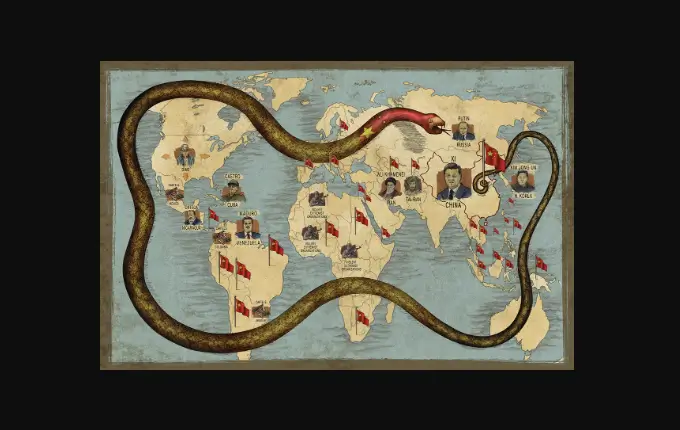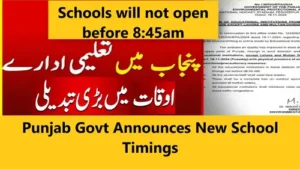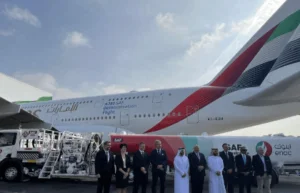BRI and Global Maritime Security: All you need to know.
Red Sea Unrest Threatens BRI’s Smooth Sailing: A Call for Global Cooperation
The Maritime Silk Road (MSR), a key component of China’s ambitious Belt and Road Initiative (BRI), faces choppy waters in the Red Sea.
Read More: CPEC & BRI 2024 and Beyond
This crucial trade artery, historically a vital connector, is now a hotbed of conflict, jeopardizing global maritime security and impacting energy, food, and economic stability.
Escalating tensions – from Houthi attacks on commercial vessels to the ongoing Israel-Hamas conflict – have thrown a wrench into the BRI’s plans for smooth sailing. These disruptions highlight the multiplier effects of Red Sea instability:
- Energy and Food Security: The volatile situation threatens oil supplies and food imports, impacting global markets.
- Trade Routes Impacted: Disrupted shipping lanes raise costs and hinder trade flow, causing economic ripple effects.
- Socio-economic Prosperity Threatened: Regional instability impedes the BRI’s potential for driving prosperity and development.
While US diplomatic efforts remain ongoing, a lack of clear solutions and the emergence of regional “bloc mentality” further complicate the situation.
The BRI’s success hinges on a stable Red Sea:
- Trans-regional projects planned under the BRI can bolster maritime security and infrastructure.
- International cooperation is crucial to de-escalate tensions and find lasting solutions.
The Red Sea’s fate is intertwined with the BRI’s future. Addressing the current crisis requires a multi-pronged approach:
- Diplomatic efforts: Renewed and sincere commitment from regional and international actors to find peaceful solutions.
- Maritime security measures: Strengthening regional cooperation to ensure safe passage for commercial vessels.
- Sustainable development: Investing in collaborative initiatives that address the root causes of conflict and promote regional stability.
Only through collective action can we ensure the Red Sea’s vital trade route remains a bridge, not a barrier, to a prosperous and secure future.
The Red Sea crisis is sending shockwaves through global trade, rewriting navigational charts and forcing a strategic rethink. An attack on a COSCO-operated ship raises the stakes, with Pakistan’s recent naval deployment highlighting the wider reach of this instability.
Beyond immediate disruptions, the crisis presents an opportunity for a transformative shift:
- Diversifying Supply Chains: Reducing reliance on vulnerable chokepoints like the Red Sea by building redundancy and resilience into global trade networks.
- Charting New Routes: Exploring alternative shipping routes and fostering regional connectivity to mitigate risk and create a more adaptable trade infrastructure.
- Africa’s Potential: The crisis underscores the urgent need to unlock Africa’s potential as a trade hub. BRI’s investments in clean energy and port development can be critical catalysts for regional growth and stability, aligning with the goal of building interconnected and resilient trade routes.
BRI offers a roadmap for navigating this turbulent landscape:
- Trans-regional Ports: BRI’s port development projects across Africa present a strategic opportunity for enhanced regional connectivity and trade diversification.
- Land-Sea Integration: BRI’s focus on integrating land-based road networks with ports creates a comprehensive infrastructure strategy that fosters socio-economic prosperity and regional stability.
The Red Sea crisis may be a storm, but it can also be the catalyst for a more resilient and equitable global trade system.
Shanghai Cooperation Organization (SCO), and the Belt and Road Initiative (BRI) can offer vital anchors of stability.
Building Bridges, Not Walls:
- CGSI’s focus on global security cooperation can fuel meaningful dialogue and establish maritime security norms. This platform for discussion allows stakeholders to navigate differences peacefully.
- SCO’s regional focus brings affected countries to the table. By fostering regional understanding and de-escalation, the SCO can mitigate local conflicts before they spill over into global threats.
- BRI’s trans-regional infrastructure projects like ports, railways, and land roads create interconnectedness. This fosters interdependence and discourages conflict along crucial trade routes.
Beyond Talk, Action:
- Open communication and diplomacy: Establishing dedicated channels for dialogue can prevent misunderstandings and cool tempers. Peaceful persuasion and development initiatives can lay the groundwork for lasting stability.
- Reshaping trade routes: Diversifying supply chains beyond the Red Sea reduces vulnerability to regional conflicts. By fostering regional development and building resilient global systems, we can weather future storms.
By embracing diversification, exploring new routes, and tapping into Africa’s potential, BRI can play a crucial role in steering the world towards a brighter economic future.
While Western narratives may paint a one-sided picture, it’s crucial to examine China’s substantial investments in Africa under BRI.
BRI in Africa: Beyond the Headlines
- Infrastructure Boom: Mega projects like ports, railways, and communication networks are transforming the continent.
- Human Capital Focus: Investment in education and skills development fosters long-term growth.
- Connecting the Dots: BRI revitalizes critical trade routes like Djibouti, the Red Sea, and the Mediterranean.
- Beyond Bricks and Mortar: China’s active role in energy, food cooperation, and port development showcases its commitment to socio-economic progress.
The Gaza Shadow over the Red Sea
- The ongoing conflict in Gaza casts a long shadow, potentially drawing regional powers and sparking proxy wars.
- US intervention through a maritime task force adds another layer of complexity, raising concerns for regional and global maritime security.
- The Red Sea’s stability is vital for Saudi Arabia’s development plans, including the crucial Yanbu pipeline terminal that bypasses the Hormuz Strait.
Navigating the Turbulent Waters:
- Amidst heightened tensions, fostering dialogue and diplomacy becomes paramount.
- Collaborative efforts to de-escalate the Gaza conflict are crucial to preventing spillover effects in the Red Sea.
- Diversifying trade routes and fostering regional cooperation can mitigate risks and enhance global maritime security.
BRI’s potential in Africa remains vast, but navigating the choppy waters of the Red Sea requires a nuanced approach.
Meanwhile, the ongoing war in Sudan threatens Saudi Arabia’s Red Sea security, prompting Riyadh’s mediation efforts.
BRI and Vision 2030: Weaving a Tangled Web
Despite these tensions, China remains actively engaged through the Belt and Road Initiative (BRI) and Saudi Arabia’s Vision 2030 plan. The Jazan economic city in southern Saudi Arabia, a BRI project, exemplifies their intertwined ambitions. With 152 countries and 32 international organizations already on board, BRI’s reach is undeniable.
Strategic Crossroads for a Globalized World
The Red Sea’s significance extends far beyond regional politics. It connects the Mediterranean and Indian Oceans, serving as a lifeline for China’s trade with Europe, Africa, and the Middle East. It’s also a bridge for China’s “humanistic efforts,” facilitating cultural exchange and development in Africa and the Middle East.
COSCO, CMG, and Hutchison: Pillars of Maritime Security?
Chinese maritime giants like COSCO Shipping, China Merchants Group, and Hutchison Ports play a crucial role in providing essential services across the region. Their presence, some argue, inadvertently bolsters regional security by ensuring uninterrupted trade flows.
Navigating the Choppy Waters: A Call for Collective Action
Xi Jinping’s Global Security Initiative (GSI), Global Development Initiative (GDI), and Global Cultural Industry Initiative (GCI) offer potential pathways for collaboration. However, addressing the Red Sea’s multifaceted challenges requires a collective effort.
Moving Beyond the Headlines: A Nuanced Approach
- Acknowledge the complex interplay of forces in the Red Sea, moving beyond simplistic narratives.
- Highlight the positive potential of BRI and China’s engagement, while recognizing potential security concerns.
- Advocate for collaborative solutions involving regional and international actors, including de-escalation efforts in Sudan and Gaza.
- Promote the importance of maritime security and open trade routes for global economic stability.
By presenting a nuanced and balanced perspective, you can empower readers to understand the Red Sea’s complexities and engage in constructive discussions about its future.
Remember, effective SEO goes beyond keywords; it’s about creating informative and engaging content that resonates with your audience and encourages them to think critically about the world around them.
Note: The information above might not be accepted 100%. Please verify from your own sources. We will not be responsible for any kind of loss due to our content.
For more news, please visit Munafa Marketing.




